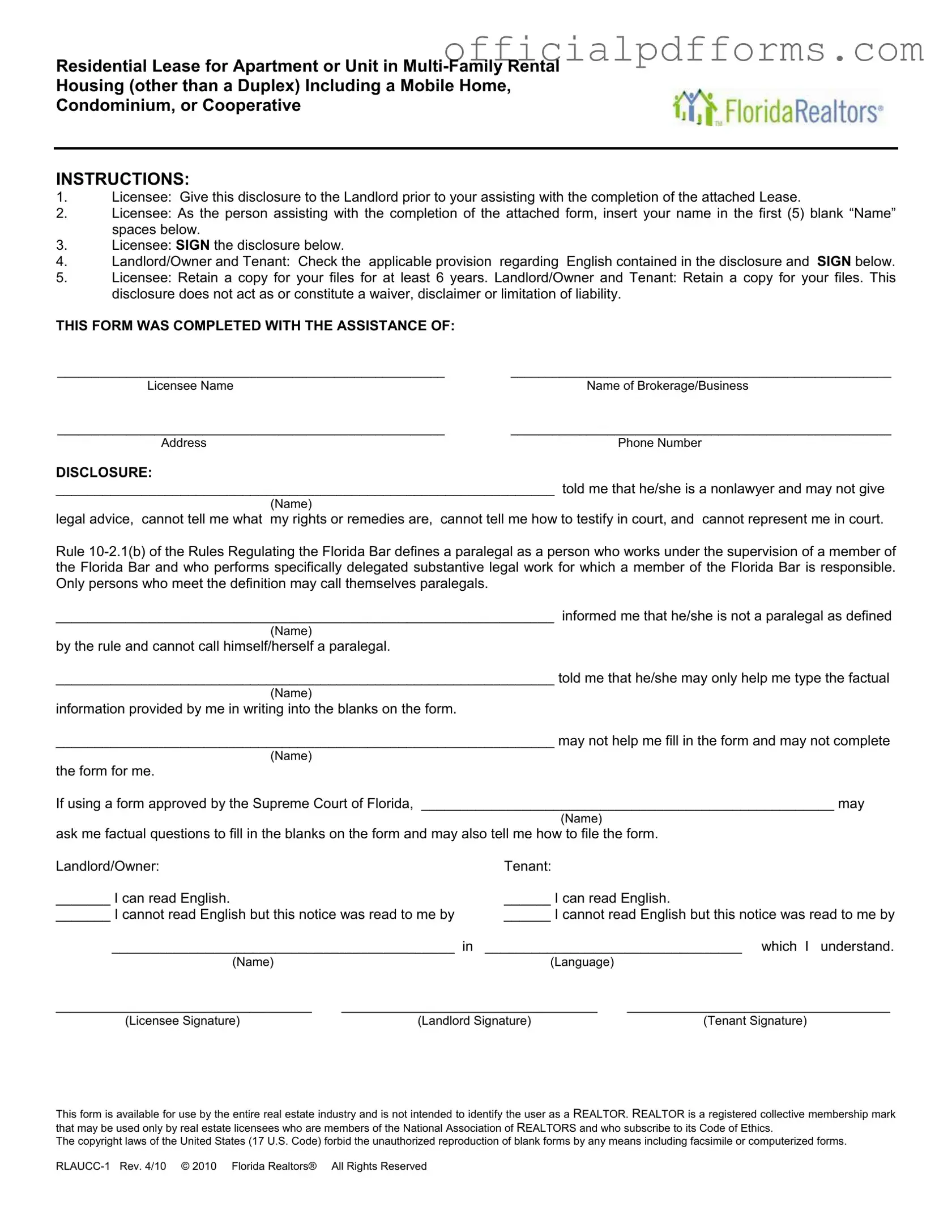The Florida Realtors Residential Lease form is a standardized document used for leasing residential properties in Florida, specifically for apartments or units in multi-family rental housing, including mobile homes, condominiums, or cooperatives. It outlines the terms of the lease agreement between the landlord and tenant, including payment details, responsibilities, and rights.
This lease form is intended for use by landlords and tenants involved in residential rental agreements in Florida. It is suitable for various types of residential properties, but not for commercial or agricultural use. Both parties should review the form carefully to ensure it meets their needs.
What are the key components of the lease?
The lease includes several essential sections, such as:
-
Terms and parties involved
-
Property details
-
Rent payments and charges
-
Security deposits and advance rent
-
Maintenance responsibilities
-
Utilities
-
Landlord's access to the premises
-
Prohibited acts by the landlord
-
Defaults and remedies
How is rent payment structured in this lease?
Rent is typically structured as monthly or weekly payments, as specified in the lease. The exact amount and due date are outlined in the agreement. Additionally, any taxes imposed on the rent must be paid by the tenant. If the lease starts mid-month or mid-week, the rent may be prorated accordingly.
What is the purpose of the security deposit?
The security deposit serves as a financial safeguard for the landlord against potential damages or unpaid rent. The lease specifies the amount of the security deposit and outlines how it will be held, whether in an interest-bearing account or through a surety bond. It also details the conditions under which the deposit may be withheld at the end of the lease.
What maintenance responsibilities do landlords and tenants have?
Maintenance responsibilities are divided between the landlord and tenant. The landlord is generally responsible for major repairs and ensuring the property meets health and safety codes. Tenants are expected to keep the premises clean and sanitary, handle minor repairs, and use utilities responsibly. Specific responsibilities can be outlined in the lease.
Can the lease be terminated early?
Yes, the lease can be terminated early under certain conditions. For example, if the tenant is a member of the U.S. Armed Forces, they may have the right to terminate the lease as provided in Florida law. Other circumstances may also allow for early termination, but these should be specified in the lease agreement.
What happens if a tenant fails to pay rent on time?
If a tenant fails to pay rent on time, the lease may specify late charges. The landlord has the right to impose these charges and may also take further action as outlined in the lease or under Florida law, which includes the potential for eviction if the issue is not resolved.
Are there any restrictions on pets or smoking in the lease?
The lease may include restrictions on pets and smoking. Landlords can specify whether pets are allowed and under what conditions, such as requiring a pet deposit. Similarly, smoking policies can be included, either permitting or prohibiting smoking within the premises.
How long should copies of the lease be kept?
Both landlords and tenants should retain copies of the lease for their records. It is recommended to keep these documents for at least six years, as they may be needed for reference or in the event of disputes.
